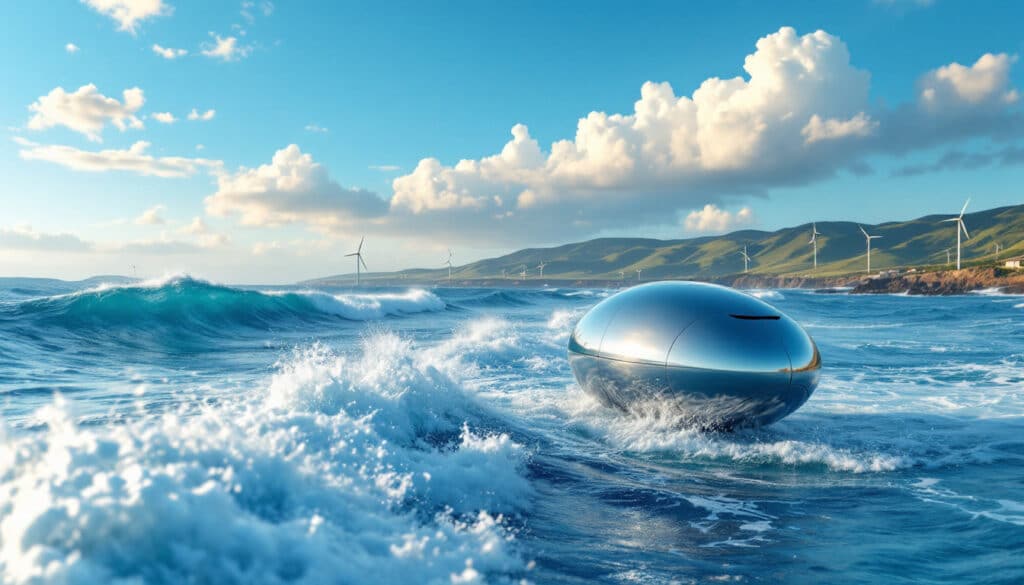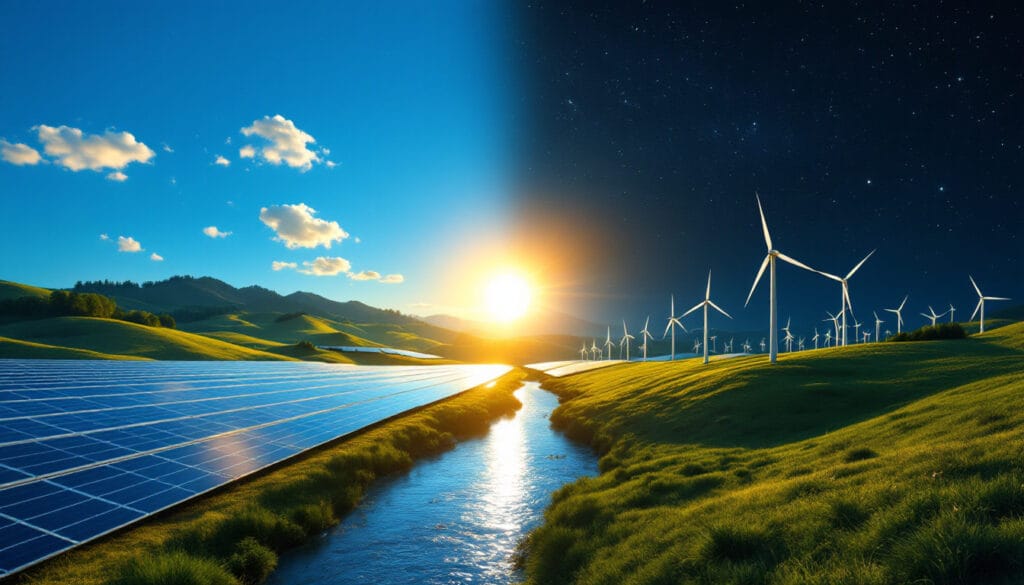Wave energy, still largely untapped, represents an unparalleled opportunity for the future of energy. Imagine a world where the rhythmic movement of waves could transform our electricity generation. With the potential to power millions of homes across the globe, this marine resource offers promising energy yields, up to three times higher than other renewable technologies. Along the American coasts, for example, its power could satisfy the electricity consumption of 130 million homes. As innovative startups and pilot projects emerge, the goal is clear: to harness the waves to provide a sustainable response to our quest for clean energy. The enthusiasm surrounding this technology continues to grow, positioning it as an emblematic solution in our transition to renewable energies.
Wave energy is a form of renewable energy that harnesses the force of waves to produce electricity. Despite its colossal potential, it remains largely untapped on a global scale. This resource is based on the movement of waves which, thanks to specific devices called converters, can be transformed into usable energy. Converters are often installed in areas known as “wave farms”, which are strategically positioned to optimally capture wave energy.
It is estimated that wave energy could generate energy yields of up to three times that of conventional wind farms. For example, along the American coasts, it is predicted that this energy could power up to 130 million homes, highlighting its immense potential. Nevertheless, the technology needed to harness this energy is still in the development stage, although significant progress has been made in recent years.
One of the strengths of wave energy lies in its potential to cover a significant portion of global energy needs. According to the World Energy Council, it could satisfy about 10% of the world’s annual electricity demand. In mainland France, this potential is quantified at around 40 terawatt-hours per year, or 10% of the national electricity consumption. This figure clearly shows how wave energy could help reduce dependence on fossil fuels.
Of course, wave energy is not without its challenges. The initial costs of developing and implementing wave energy technologies can be high, and challenging ocean conditions can sometimes pose an obstacle to deploying this renewable energy solution. Additionally, environmental considerations must be taken into account to ensure that the installation and operation of devices do not affect the surrounding marine ecosystems.
Innovative advancements are, however, underway, with prototypes such as those tested by IFREMER and Seaturns, and numerous visionary startups working tirelessly to capitalize on this untapped potential. In Finland, for example, several startups are already riding the wave of this promising energy source, developing technologies capable of effectively converting the power of waves into electricity.
The site Green Just Now also highlights the potential of marine energy, of which wave energy is a key component. Often relegated to the background, wave energy is poised to become a major player in the global energy transition, providing a renewable and clean response to the growing electricity needs.

FAQ about Wave Energy: an Untapped Source
Q: What is wave energy?
A: Wave energy is the conversion of wave movement into electricity, thus harnessing a promising renewable energy source still largely untapped.
Q: What is the global potential of wave energy?
A: Experts estimate that wave energy represents the largest untapped source of clean renewable energy globally, capable of supplying between 10% and 20% of the electricity consumed worldwide.
Q: What is the capacity of wave energy farms compared to other energy sources?
A: It is estimated that wave energy farms or “wave farms” can yield up to three times more energy than wind or solar farms.
Q: Are there projects being developed to harness wave energy?
A: Prototypes, such as those tested by Ifremer and Seaturns, are in development to transform the immense resource that wave energy represents globally.
Q: What are the challenges associated with harnessing wave energy in France?
A: In mainland France, the potential of wave energy is estimated at 40 terawatt-hours per year, which is about 10% of the country’s annual electricity consumption. This is a major issue for diversifying renewable energy sources.
Q: Why is wave energy considered a green energy?
A: It is considered a renewable energy source because it uses the natural force of waves, without the need for fossil fuels, and thus contributes to reducing the carbon footprint.
Q: What are the challenges to overcome for the use of wave energy?
A: Challenges include the need to develop robust technologies capable of withstanding extreme marine conditions, managing local ecological impacts, and the high cost of the infrastructure needed to effectively capture this energy.
Articles similaires
Thank you!
We will contact you soon.













